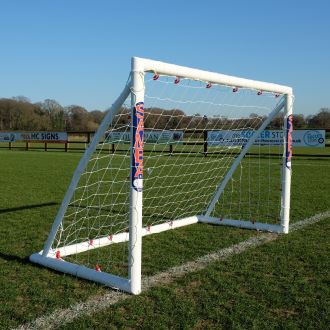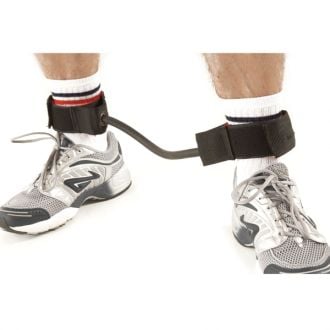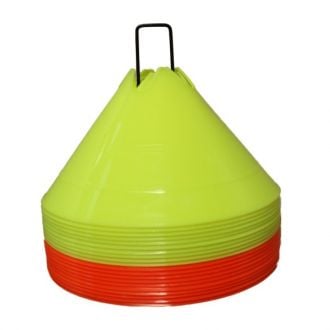5 Training Routines for the Close Season
As the end of another season approaches, the thoughts of footballers up and down the country turn to leisure, holidays and relaxation. But in order to hit the ground running at the start of next season, it’s always a good idea to stay in shape during the summer break.
By making the following routines part of your weekly plans throughout the summer, you can remain match-fit and at the peak of your powers when you return to training after your break.
1. Five weeks before pre-season starts
You should think of your season as starting five weeks before your first training session back with your teammates. In order to get your heart working again after a period of inactivity, take two 45-minute runs – maintaining 75% of your maximum heart rate. You should also aim to complete two individual sessions of a sport you find enjoyable. Getting a sweat on and your heart pumping on four different days throughout the week is a good way to ease you back into exercise. It’s also a good idea to start conditioning your lower body in readiness for pre-season training. Instead of hammering the weights at the gym, you can achieve similar results with leg toners and resistance bands.
2. Four weeks before pre-season starts
You should now be thinking about stepping up the intensity of your training. Head along to a public pitch or park, and set out a running course using training cones. You can set up in straight lines or create your own running track, depending on the space you have. Sprint as hard as you can for three minutes, and then rest for one minute. You should then sprint your course for two minutes, and rest for two minutes. Finally, sprint for one minute and rest for three minutes. This 12-minute drill should be repeated three times for a beneficial cardiovascular workout.
This form of interval training is all about moving form aerobic exercise to anaerobic exercise. It improves your body’s ability to manage high levels of lactic acid in the muscles. Performing this interval training routine three times during this week should mean you’re better equipped to sustain your performance over 90 minutes from the moment the season kicks off.
3. Three weeks before pre-season starts
This is the time to really crank up the intensity of your close season workouts. You need to get on top of lactic acid build-ups before they threaten to shut your body down, so more intensive interval training is a necessity. A great way to step things up a notch is to jog for a minute and then sprint for a minute. Repeat this process 10 times for a complete workout. You can experiment with different timings, but the key to knowing that you’re getting the workout you need is muscle pain. If you can’t feel it in your muscles, you’re not doing it correctly.
This is the time to start training with a ball again. So, invest in a set of football goals and some training markers, and set up a makeshift five-a-side pitch at the local park. Five-a-side football with teammates or friends is ideal preparation for an arduous pre-season, as it includes lots of sprinting, high-intensity action and multidirectional movement.
4. Two Weeks before pre-season starts
Now is the time to start training like you’re already in pre-season mode. Use some training cones to set up a few shuttle runs. Ideally, you should be sprinting in one direction and then walking back to the start. Aim to sprint over short courses of between 30 and 50 metres.
Another interesting and effective drill is called the centre circle clock. Mark out a clock face using 12 training cones. Starting in the middle, run to 3 o’clock and back, and then rest for five times longer than the sprint took. Repeat the sprint to 6 o’clock, 9 o’clock and 12 o’clock. Consider your four shuttle runs as one set. You should increase the intensity by running the odd or even numbers – giving you a workout of six sprints at a time.
5. One week before pre-season starts
By now, you should be able to perform all of your close season drills and workouts within the space of a week. However, in order to give yourself one final tune-up, it might be a good idea to put some endurance training in – with a little resistance training thrown in for good measure.
In order to build lower-body strength and undertake a cardiovascular workout at the same time, spend 30 minutes on a rowing machine at high-intensity, followed immediately by a high-resistance workout on a stationary fitness bike. Of course, you can swap either of these items of fitness equipment for a cross trainer.
No footballer wants to be lagging behind teammates during the all-important pre-season. By making these training drills part of your weekly routine from five weeks out, you can ensure that you make a flying start to the new football season.




